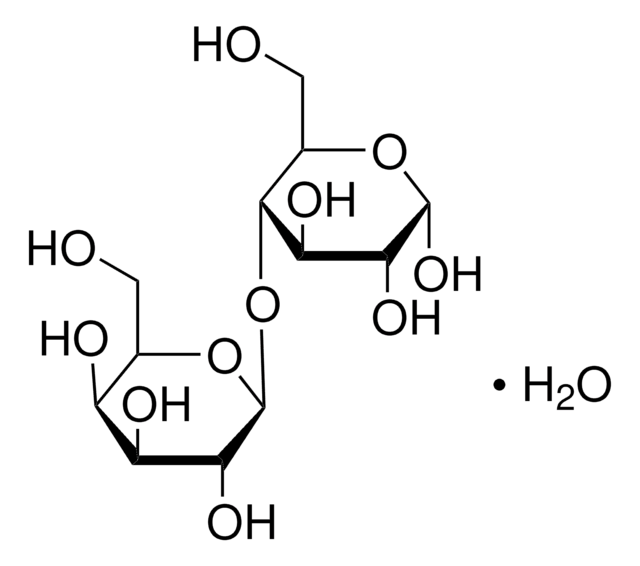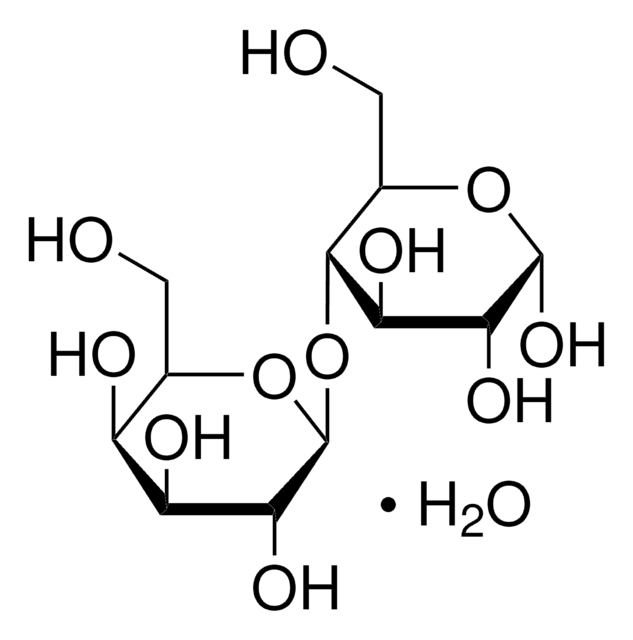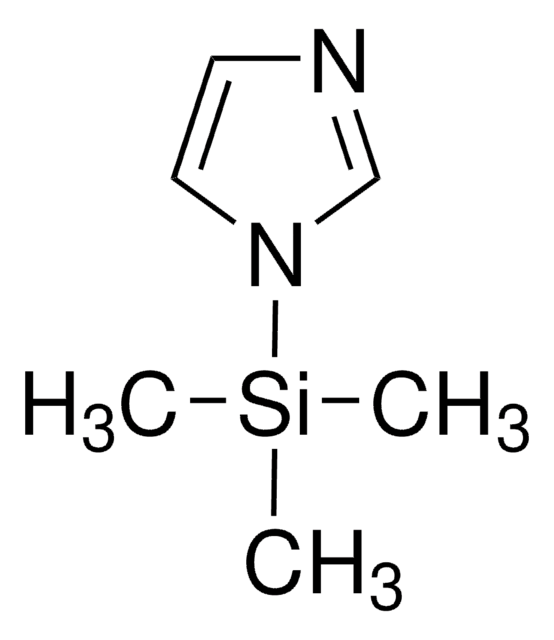Kluczowe dokumenty
L3750
β-Lactose
≤30% α-anomer basis, ≥99% total lactose basis
Synonim(y):
β-D-Gal-(1→4)-β-D-Glc
About This Item
Polecane produkty
pochodzenie biologiczne
bovine milk
Poziom jakości
Próba
≥99% total lactose basis
Postać
powder
stężenie
≥30% (α-anomer)
kolor
white to off-white
rozpuszczalność
water: 50 mg/mL, clear, colorless
temp. przechowywania
room temp
ciąg SMILES
OC[C@H]1O[C@@H](O[C@H]2[C@H](O)[C@@H](O)[C@H](O)O[C@@H]2CO)[C@H](O)[C@@H](O)[C@H]1O
InChI
1S/C12H22O11/c13-1-3-5(15)6(16)9(19)12(22-3)23-10-4(2-14)21-11(20)8(18)7(10)17/h3-20H,1-2H2/t3-,4-,5+,6+,7-,8-,9-,10-,11-,12+/m1/s1
Klucz InChI
GUBGYTABKSRVRQ-DCSYEGIMSA-N
Szukasz podobnych produktów? Odwiedź Przewodnik dotyczący porównywania produktów
Opis ogólny
Zastosowanie
- to treat HL-1 cells followed by phorbol dibutyrate (PDB) treatment to study if protein kinase C (PKC) -stimulated accumulation is mediated through galectin-3
- as a component of a media to analyze the extracellular production of protein
- along with recombinant galectin-3 to treat cells for the detection of galectin-3 cell surface binding
- along with recombinant galectin-3 or a control protein to stimulate T cells for apoptosis assay
Działania biochem./fizjol.
Inne uwagi
Kod klasy składowania
11 - Combustible Solids
Klasa zagrożenia wodnego (WGK)
WGK 1
Temperatura zapłonu (°F)
Not applicable
Temperatura zapłonu (°C)
Not applicable
Środki ochrony indywidualnej
Eyeshields, Gloves, type N95 (US)
Certyfikaty analizy (CoA)
Poszukaj Certyfikaty analizy (CoA), wpisując numer partii/serii produktów. Numery serii i partii można znaleźć na etykiecie produktu po słowach „seria” lub „partia”.
Masz już ten produkt?
Dokumenty związane z niedawno zakupionymi produktami zostały zamieszczone w Bibliotece dokumentów.
Klienci oglądali również te produkty
Nasz zespół naukowców ma doświadczenie we wszystkich obszarach badań, w tym w naukach przyrodniczych, materiałoznawstwie, syntezie chemicznej, chromatografii, analityce i wielu innych dziedzinach.
Skontaktuj się z zespołem ds. pomocy technicznej





